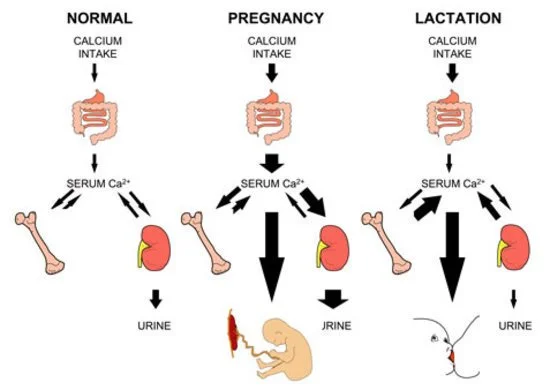Is Seen’s Calcium Chew Good for Pregnancy and Postpartum?
Summary: Explaining why our calcium chew is good for pregnancy and postpartum, life stages that, along with menopause, it is critical to maintain and build bone.
The short answer is yes. The long answer? Let’s begin with Seen Nutrition’s story and a diagnosis many women have never heard of but should. Shortly after giving birth, co-founder Jenny Han, PharmD, was diagnosed with pregnancy and lactation associated osteoporosis, or PLO. It is a rare condition that causes accelerated bone loss in late pregnancy and the postpartum period. Jenny suffered multiple back fractures just two months postpartum. After a simple fall rolling off a yoga ball, she experienced severe back pain. Later, she would discover it was the result of PLO.
Although PLO is considered rare, researchers are working to change how it is understood. A Columbia University study notes that most PLO cases go undetected until after the first fracture. Women are often otherwise healthy and in their twenties or thirties. Symptoms like back pain or loss of height are sometimes overlooked or mistaken for normal postpartum changes. But in PLO, bone density can drop dramatically, especially in the spine, due to the intense calcium demands of pregnancy and breastfeeding.
During the third trimester, the fetus requires significant calcium to build its skeleton. This adds up to about 30 grams total, or roughly 250 to 300 milligrams per day. In fact, as a recent study reported,”By the end of full-term gestation, the average fetus accretes about 30 g of calcium, 20 g of phosphorus, and 0.8 g of magnesium to mineralize its skeleton and maintain normal physiological processes..” If calcium intake is too low or absorption is poor, the body pulls calcium from the mother’s bones to meet that demand. This continues throughout lactation. The Royal Osteoporosis Society notes that breastfeeding women may lose up to 5 to 10 percent of their bone mass. Most recover this loss after weaning, but in PLO, the bone loss is more severe and recovery may be incomplete.
An illustration of the three versions of calcium homeostasis in human pregnancy and lactation. See https://www.ncbi.nlm.nih.gov/books/NBK279173/ for the full explanation.
Jenny’s experience showed how few options there were for women during this stage of life. Calcium pills were hard to swallow and caused stomach upset. Many supplements relied on calcium carbonate or similar mineral forms that the body struggles to absorb. That is why we started Seen Nutrition and created a real food based calcium chew that supports calcium intake in a form that is easier to digest and absorb.
Seen’s calcium chew uses naturally derived milk minerals along with vitamin D from mushrooms to support absorption. The chew is naturally sweetened with organic dates and contains no synthetic additives. For women navigating pregnancy, breastfeeding, or recovery postpartum, this chew offers a food-first option to support strong bones without the drawbacks of traditional pills or powders.
Although PLO is still underdiagnosed, awareness is growing. Experts recommend that women with risk factors such as low body weight, family history of osteoporosis, delayed menarche, or limited calcium intake discuss bone health with their healthcare providers. New pain or fractures after childbirth should never be ignored.
Jenny’s diagnosis changed her life and helped lay the foundation for Seen. From this medical diagnosis, it also led to the creation of a product that now supports women across all 50 states. Whether you are pregnant, breastfeeding, or rebuilding your strength after delivery, Seen’s calcium chew is made with your bone health in mind. We believe prevention should start early and start with real food.
To learn more about this condition, visit Columbia University’s coverage of recent PLO research and the Royal Osteoporosis Society’s guidance for women.

